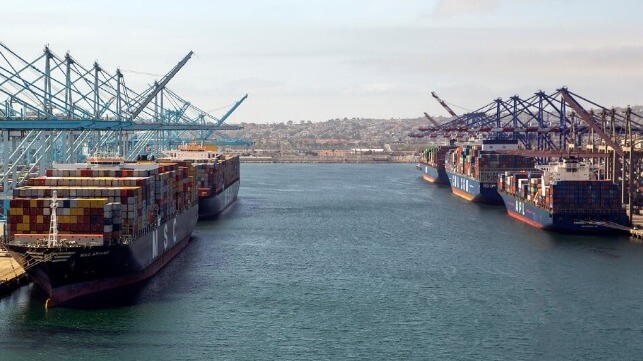Port of LA Calls Disruptions “Minimal” as Labor Secretary Enters Talks

The Port of Los Angeles sought to downplay reports of disruptions in its monthly update saying operations are mostly normal and while experiencing sporadic labor shortages that the impact was “minimal” so far. They also highlighted that the Biden administration has quietly increased its efforts, speaking with both sides of the current contract negotiations, seeking to ensure the talks are moving forward with reports of a possible "cooling-off" period.
Speaking to the media, Gene Seroka, Executive Director of the Port of Los Angeles said, “We have been able to function close to normal since June 1,” while also admitting during the briefing that the port is currently operated at about 70 percent of full capacity. With volumes down due to the economy, Seroka points to the number of vessels on dock, dwell time for containers at the port, and the number of boxes at the terminals “ready to go,” saying that all three indicators remain largely stable. He called much of the rhetoric an expression of “frustration” from both sides that the talks have taken 13 months.
The port repeated its calls for the urgency to have an agreement in the labor talks to maintain what it sees as a building recovery from the low point in volumes in February 2023. Seroka confirmed the other reports that Acting Labor Secretary Julie Su flew to San Francisco and has met with both the Pacific Maritime Association and the International Longshore Workers Union and remains in the city to collaborate with both sides of the negotiations. Seroka called the labor negotiations “a top priority for the Biden Administration.” Unconfirmed reports in the media are saying that two sides agreed to a cooling-off period proposed by Su while the PMA and ILWU have also overcome some sticking points in the talks.
While port officials are seeking to downplay the disruptions, the Marine Exchange of Southern California issued an update late on Tuesday saying that 11 ships have now delayed their arrival times with agents telling them it is due to labor shortages. The delays are ranging between a few hours to one or two days.
“Even with improving volume, our terminals are a long way from working at full capacity,” Seroka however admitted during the media briefing. May’s volume was down nearly 20 percent on imports, exports, and empties moved versus a year ago and about six percent below the port’s five-year rolling average. Similarly, for the first five months of 2023, the Port of Los Angeles is 15 percent behind the five-year average. Despite that, they highlighted volumes are up 60 percent since the low in February this year.
“We’re starting to see more vessels headed across the Pacific to Los Angeles, an encouraging sign for the second half of the year,” Seroka highlights. Saying that if the labor contract is finalized and the economy continues to build in the U.S., he expects “a strong back half of the year.”

that matters most
Get the latest maritime news delivered to your inbox daily.
The Port of Los Angeles is forecasting even with the current uncertainties that June will see between 700,000 and 750,000 TEU which would be down from the 779,140 TEU handled in May.
Among the positive signs he 58 vessels en route to Los Angeles, up from 47 and 46 one and two months ago, and indications that retailers are beginning to increase inventories. However, the Port of Los Angeles estimates 15 percent of its volume shifted east to other ports in the past year due to labor uncertainties and notes it will take months to attract shippers and carriers to build back volumes to the port.
